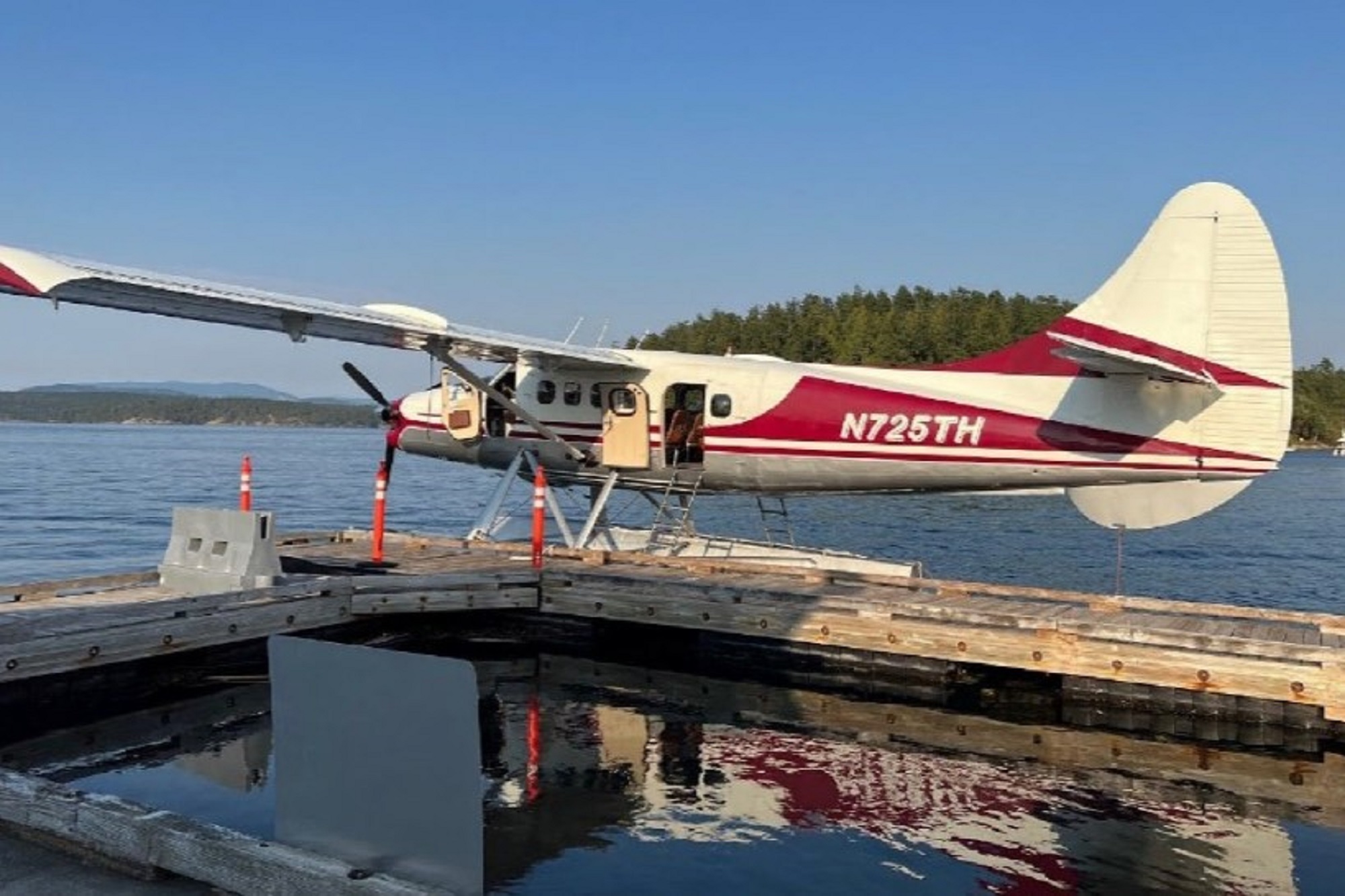A “single point of failure” led to a catastrophic crash on September 4, 2022, at Mutiny Bay, near Freeland, Washington, in the United States, resulting in the death of the 43-year-old pilot and nine passengers, the National Transportation Safety Board (NTSB) reports.
The de Havilland DHC-3 Otter floatplane took off from Friday Harbor Seaplane Base for Will Rogers Wiley Post Memorial Seaplane Base, but around 20 minutes into the journey the flight ended in disaster.
Witnesses reported, and surveillance video confirmed, the aircraft was in level flight before it climbed slightly and then abruptly pitched down, descending at an estimated rate of more than 9,500 feet per minute until it impacted the waters of Mutiny Bay.
Several witnesses described the airplane as “spinning,” “rotating,” or “spiraling” during portions of the near-vertical descent and one witness reported hearing the engine/propeller and noted that he did not hear any “pitch change” in the sounds.
The West Isle Air operated Otter sunk 200 feet and there were no survivors.
In its final report, the NTSB said that examination of the aircraft revealed that the clamp nut that attaches the top eye end and bearing assembly of the horizontal stabilizer trim actuator to the actuator barrel had unscrewed from the barrel.
What’s more the NTSB found that the circular wire lock ring, which was designed to prevent the clamp nut from unscrewing, was not present.
With the actuator disconnected from a control linkage, it would have made it impossible for the pilot to control the plane’s pitch.
Evidence led the NTSB to conclude that the flight control failure happened before the crash, not as a result of it.
Such was the concern that on October 26, 2022, the NTSB issued an urgent recommendation to the Federal Aviation Administration (FAA) and Transport Canada to require all operators of DHC-3 airplanes to conduct an immediate inspection of the affected section of the flight control system.
When the accident airplane’s design was certificated by the Federal Aviation Administration in 1952, there was no requirement for a secondary locking device to secure flight control linkages.
In 1996, regulations were amended to require newly designed aircraft to have a secondary locking device “if the loss [of the first device] would preclude the continued safe flight and landing.”
Since there was no requirement for retrofitting existing airplanes with a similar safety feature, the accident plane had only a single locking device.
As a result of the investigation, the NTSB recommended the FAA and Transport Canada require operators of DHC-3 airplanes to install a secondary retention feature to prevent a single point of failure in the flight control system.
Additional recommendations were made to both agencies as well as to the current type certificate holder, Viking Air.
Flight control system failure leads to fatal floatplane crash. Investigators pinpoint single point of failure. Read more: pic.twitter.com/6gjQKCnnmr
— NTSB Newsroom (@NTSB_Newsroom) October 5, 2023
“The Mutiny Bay accident is an incredibly painful reminder that a single point of failure can lead to catastrophe in our skies,” said NTSB Chair Jennifer Homendy. “To adequately protect safety, we must build in the necessary redundancies across the entire aviation system.”
Homendy added: “We’re calling on the Federal Aviation Administration and their Canadian counterparts to eliminate the safety vulnerability identified by NTSB investigators, so this kind of tragedy never happens again.”
In its conclusion the NTSB said the probable cause of the accident was the “in-flight unthreading of the clamp nut from the horizontal stabilizer trim actuator barrel due to a missing lock ring, which resulted in the horizontal stabilizer moving to an extreme trailing-edge-down position rendering the airplane’s pitch uncontrollable”.


